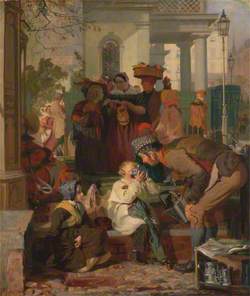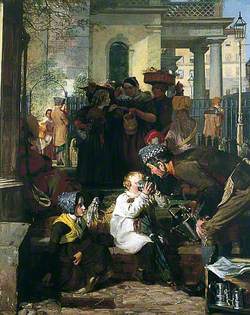How you can use this image
This image is available to be shared and re-used under the terms of the Creative Commons Attribution-NonCommercial-NoDerivatives licence (CC BY-NC-ND).
You can reproduce this image for non-commercial purposes and you are not able to change or modify it in any way.
Wherever you reproduce the image you must attribute the original creators (acknowledge the original artist(s) and the person/organisation that took the photograph of the work) and any other rights holders.
Review our guidance pages which explain how you can reuse images, how to credit an image and how to find more images in the public domain or with a Creative Commons licence available.
DownloadNotes
Add or edit a note on this artwork that only you can see. You can find notes again by going to the ‘Notes’ section of your account.
The artist, Robert Hannah, eventually presented the painting to the Royal Institution, where he had been a Manager (Trustee) during the 1890s, in 1905.
Title
Master Isaac Newton in His Garden at Woolsthorpe, in the Autumn of 1665
Date
before 1856
Medium
oil on canvas
Measurements
H 86 x W 125.5 cm
Accession number
RIIC 0281
Acquisition method
presented by the artist, 1905
Work type
Painting








